The details of the hardscape can have a huge impact on the look and feel of your garden.
Hardscaping elements – like pathways, patios, raised beds, retaining walls, fences, pergolas, and water features – are permanent, non-living structures that give a bare landscape character and form.
When hardscapes are incorporated into the overall vision of the space, they will help organize all the madness so there is a sense of flow.

Garden arbors are one hardscape feature that’s functional and incredibly beautiful.
Why Build a Garden Arbor?
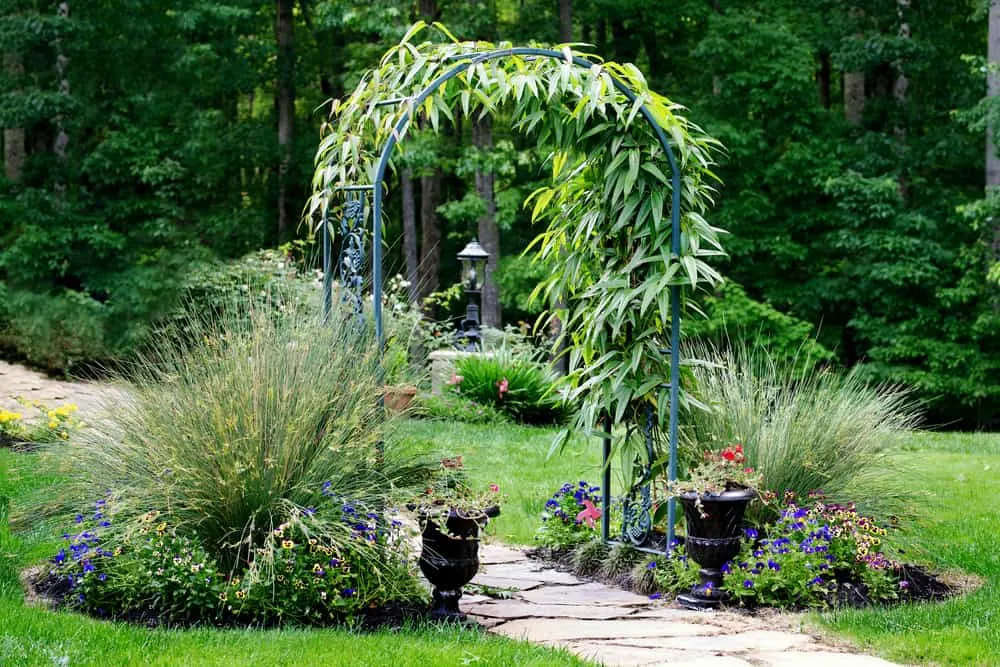
Arbors – sometimes called arches – are a focal point in the garden that draws the eye and frames the view.
At its most basic, a garden arbor consists of either two or four upright posts with a flat or arched roof. They can be kept very simple or combine with other design elements to turn the arbor into a mini-pergola, arching trellis, or tunnel pathway.
Garden arbors are often used to direct traffic through walkways or as a transition to different areas of the yard – say, from lawn to garden.
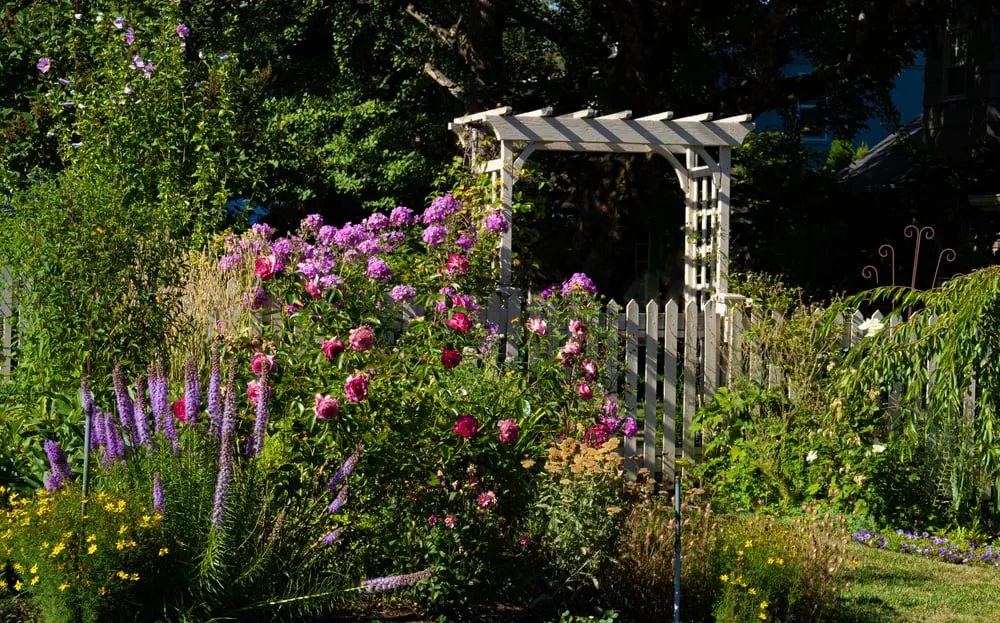
Because it adds height, garden arches are perfect for creating vertical interest in flat yards with few trees.
These structures are versatile and can be easily customized to fit into an existing garden design. Arbors can be freestanding, attached to a fence or wall, or flanked on both sides by shrubs or hedges.
But the best part of an arbor has to be the creation of more growing space in the garden.
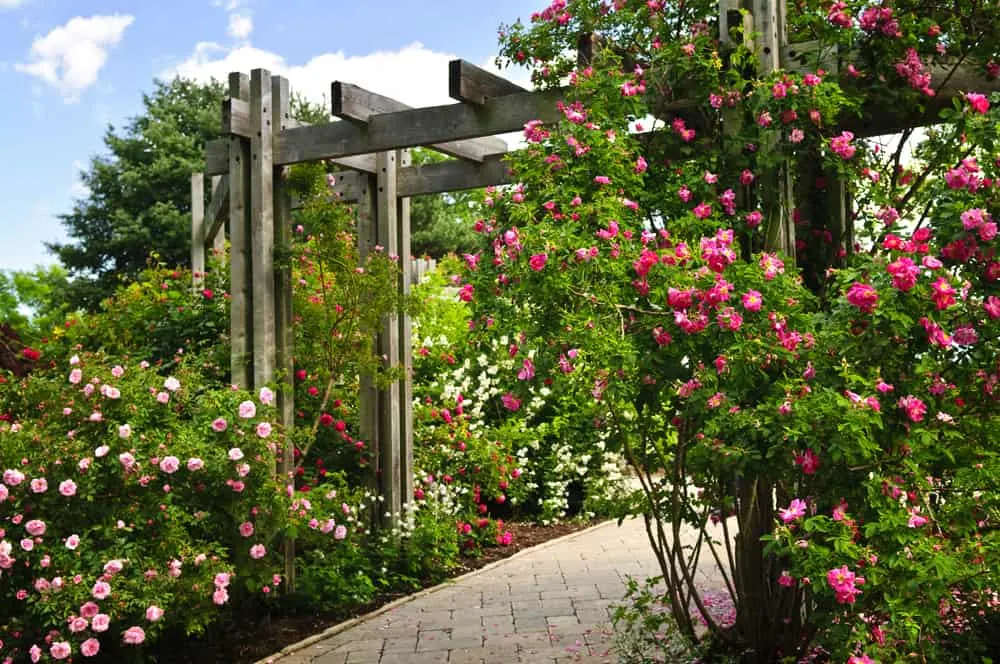
Archways are absolutely divine covered in masses of fragrant and colorful blooms. Plant flowering vines like climbing roses, wisteria, or honeysuckle and the arbor will be like a gateway into a hidden world.
Or use arbors in the food garden to trellis peas, beans, grapes, melons, and squash. Arbors all in a row will become walkable green tunnels filled with luscious dangling fruit.
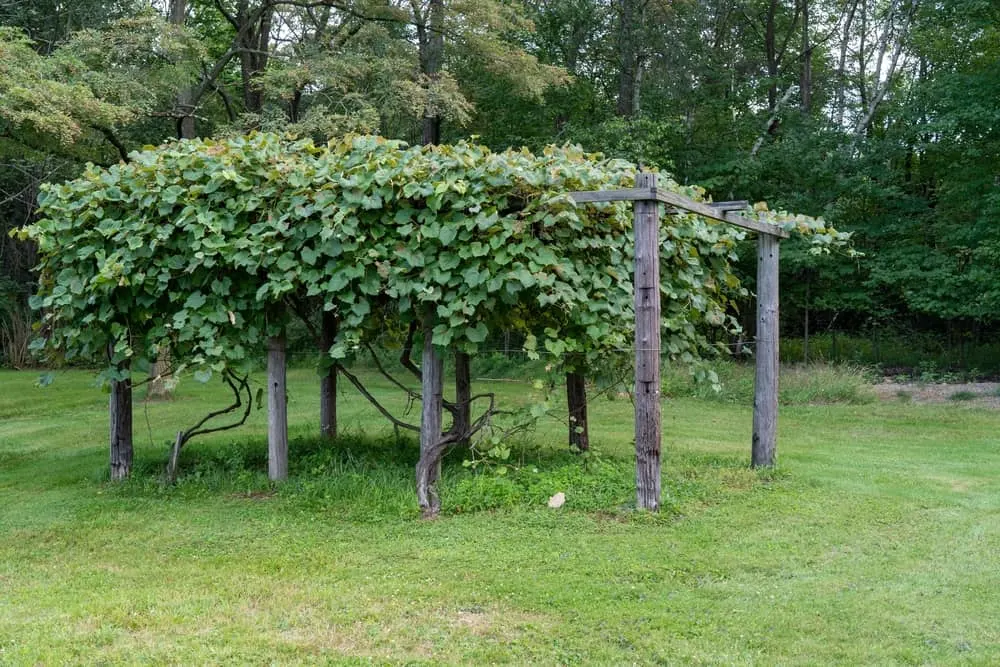
10 Garden Arbor DIYs
1. Classic Wood Garden Arch
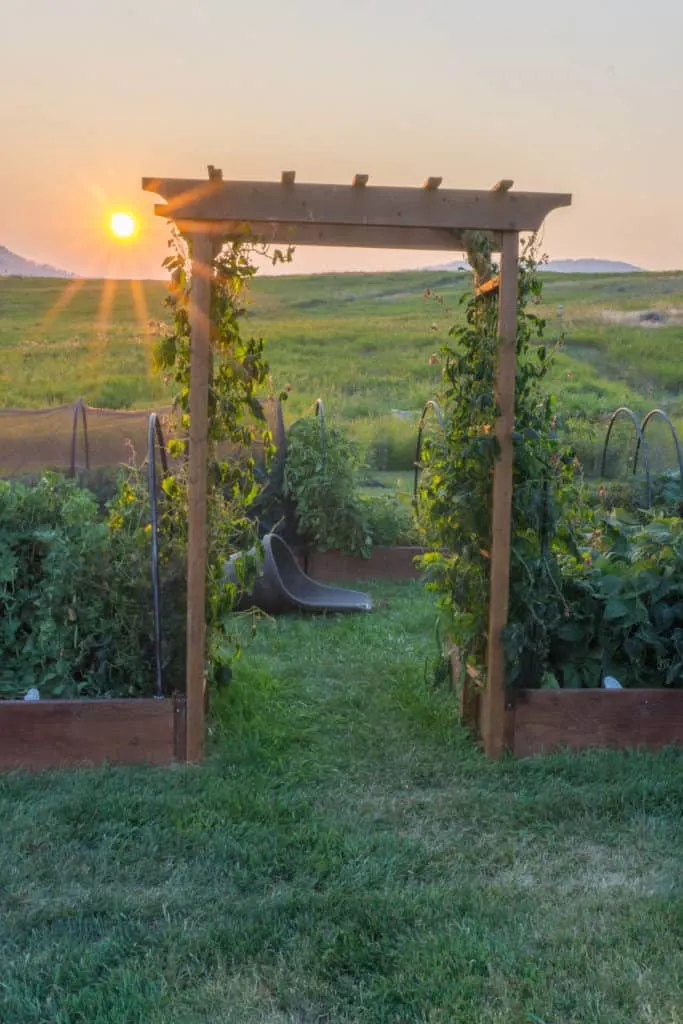
For a simple – yet striking – entryway, a classic wooden arch is a timeless piece that will never go out of style.
Built from cedar, redwood, cypress or other rot-resistant wood, the project takes less than a day’s work and requires only six wood cuts to fasten together.
Once the arch is constructed, it is set into 30-inch deep holes filled with concrete. After the concrete has hardened, finish the job with a couple coats of stain to deepen the hue and seal the wood from moisture.
Get the DIY here.
2. Garden Arbor With Lattice
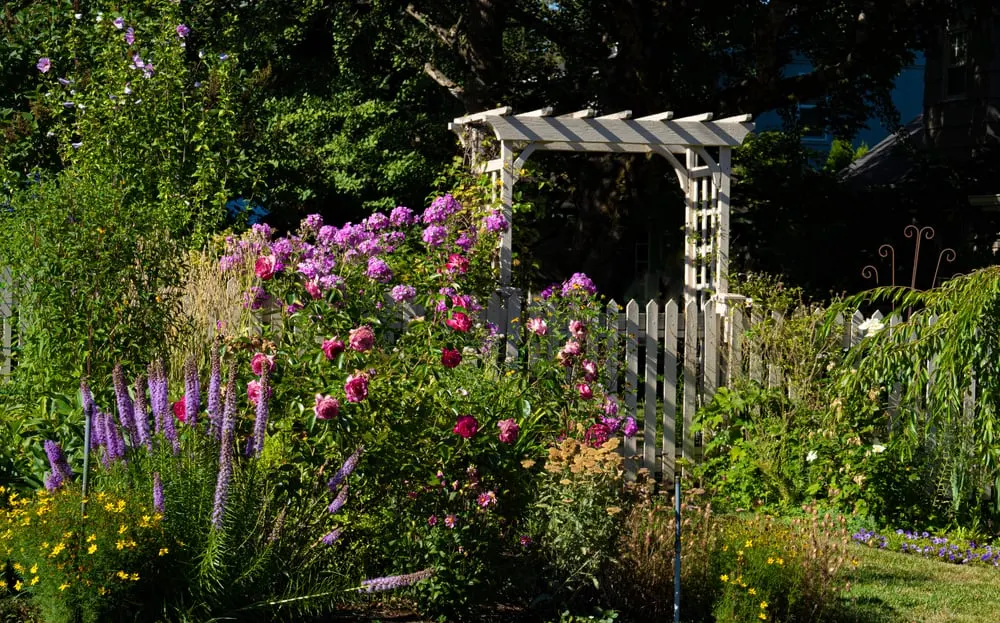
This cute arbor is an example of how to pretty up a transition from one area of the garden to the next. And it includes latticework so it will fill in with greenery in no time.
Made from treated timber painted white, it has 4-posts with a flat, slatted roof. Pieces of lattice are cut to size and inserted between the two side posts, held in place with 1” x 1” framing lumber.
The addition of decorative brackets at the inner corners helps soften the look.
3. Gated Garden Arbor
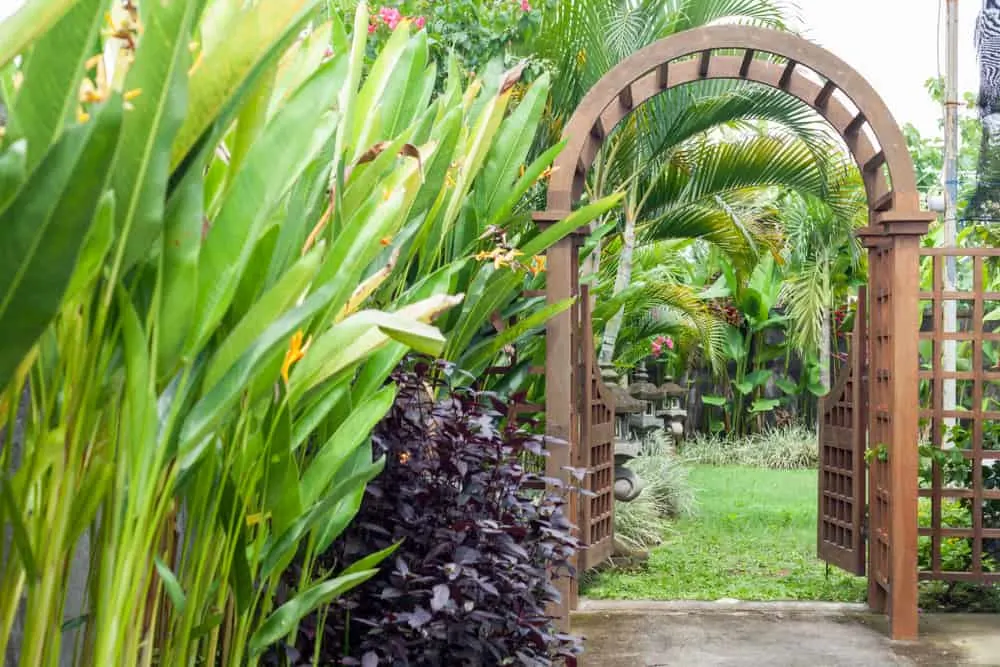
Turn a basic gate into a handsome arbor that will one day look amazing crawling with plants.
This build is ideal as a side entrance to the yard, but could easily be adapted into a larger fenced enclosure.
The tutorial will walk you through every step of the build – setting the posts in concrete, attaching fence rails and pickets, building and hanging the gate, and then topping the gate posts with a flat arbor roof.
4. Garden Arbor with Bench
Much of the time, garden arbors anoint pathways but in this DIY, the arbor bench is the final destination.
Make a secluded spot with some shade, shelter, and privacy by building a bench beneath the canopy of the arbor. Lattice along the sides will ensure climbing creepers will gain a foothold and quickly colonize the frame.
This would make a lovely restive place to enjoy a good book or glass of wine!
Get the DIY here.
5. Food Garden Arches

Creating a trellis archway through the vegetable plot is a clever way to make the food garden that much more wonderful.
The arbor tunnel is quick and cheap and durable. Each arch is made with a 18-foot cattle panel, two 6-foot T-posts, and a few zip ties.
You can set it up between raised beds to create a verdant walkway. Or situate the arches between rows in traditional in-ground gardens.
Plant vining crops like cucumbers, watermelon, pumpkin, squash, peas and pole beans and they will soon fill in the arbor canopy. At harvest time, ripe fruits will hang down inside the tunnel and be prime for the plucking.
6. Obelisk Garden Arbor
Such a simple and smart idea, this arbor design combines different trellises to form an archway that will maximize your vertical growing area.
It’s made by building two 8-foot tall obelisk trellises from 2” x 2” and 2” x 1” wood cuts. The towers act as the arbor posts with a basic ladder style trellis spanning the tops to form the roof.
The obelisk garden arbor is an easy, beginner-level project that’s not rooted to one place and can be moved around from season to season.
Paint it up in a bright and cheery hue to give the garden a pop of color and a dash of whimsy.
Get the DIY here.
7. Wood Branch Arbor
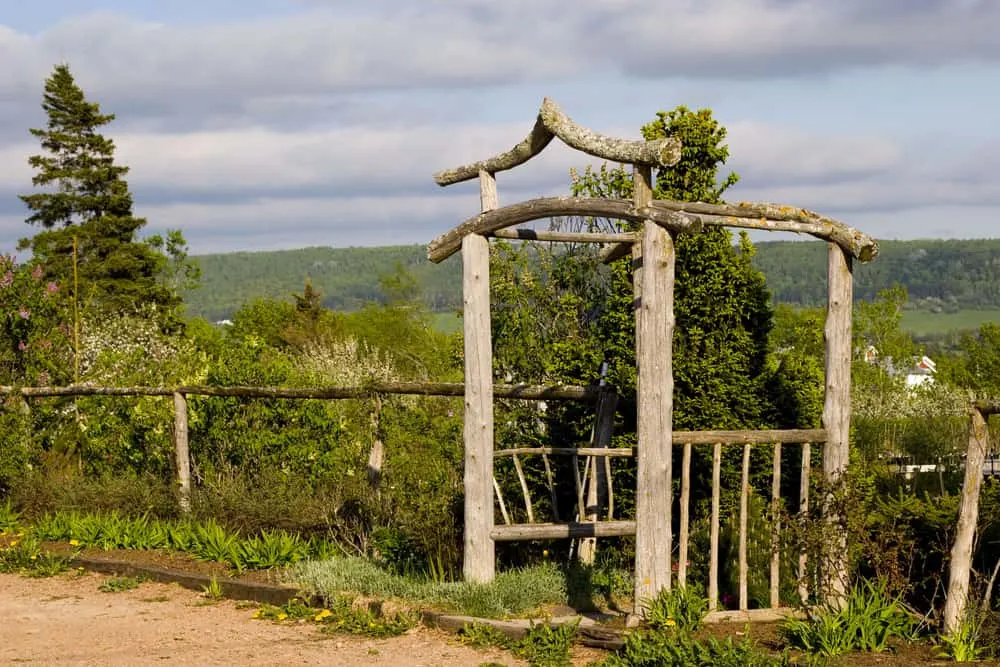
This rustic arbor costs next to nothing to make, provided you can round up a heap of branches and logs.
You’ll need a collection of mostly straight sticks in varying lengths, with diameters ranging from 1 to 3 inches.
The thicker cuts are nailed together to create the arbor posts and gable roof. The more slender branches fill in the frame and reinforce the structure.
Although the design is super basic, the wood branch arbor is not without a few decorative flourishes. The plans include twig embellishments that create interesting shapes on the gable roof and side trellises.
Get the DIY here.
8. Bent Wood Arbor
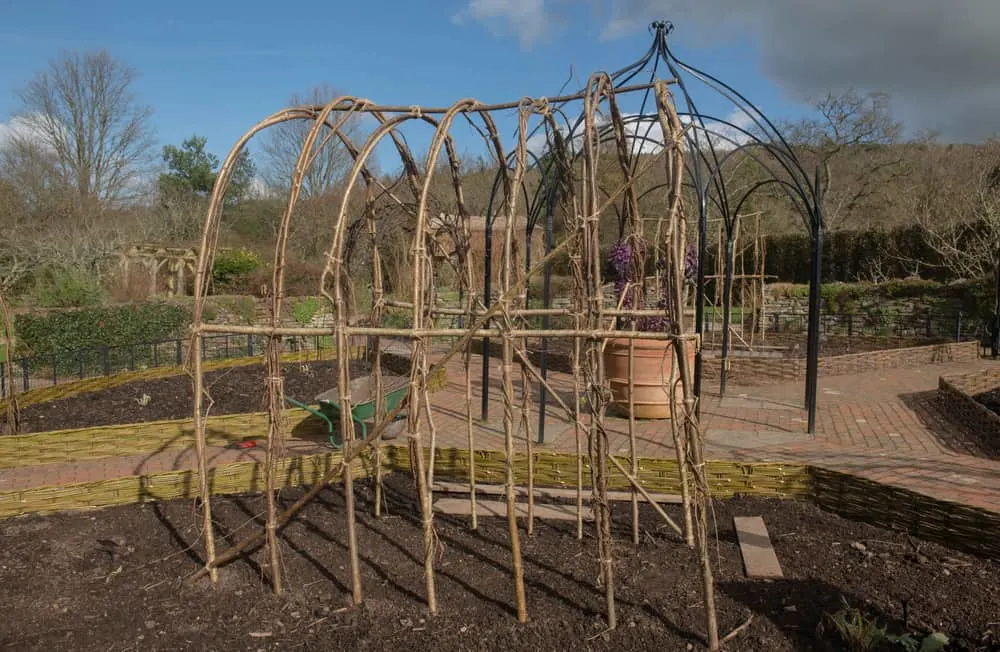
If you love the natural look of raw wood, here’s a gorgeous arbor assembled from scavenged brushwood and saplings.
With soft lines and lots of curves, the arched roof and trellis patterning is bent into shape from green, pliable wood.
Willow, hazel, plum, forsythia, and sweet chestnut are great for bending but any long and slender saplings would work.
Get the DIY here.
9. Rebar Garden Arch
A good foil for those pricey wrought-iron arbors, the rebar arch is an easy DIY that doesn’t require welding – just bending.
Two 20-foot lengths of 1/2-inch rebar are first bent into a semi-circle with the help of stakes and then are driven into the ground to a depth of 18-inches. Shorter rebar lengths are made into circles with a conduit bender and lashed between the arches with copper wire.
The finished product doesn’t need to be perfect since it’ll soon be covered with plants. Make one or line several in a row to create a tunnel effect.
Get the DIY here.
10. Living Willow Arbor
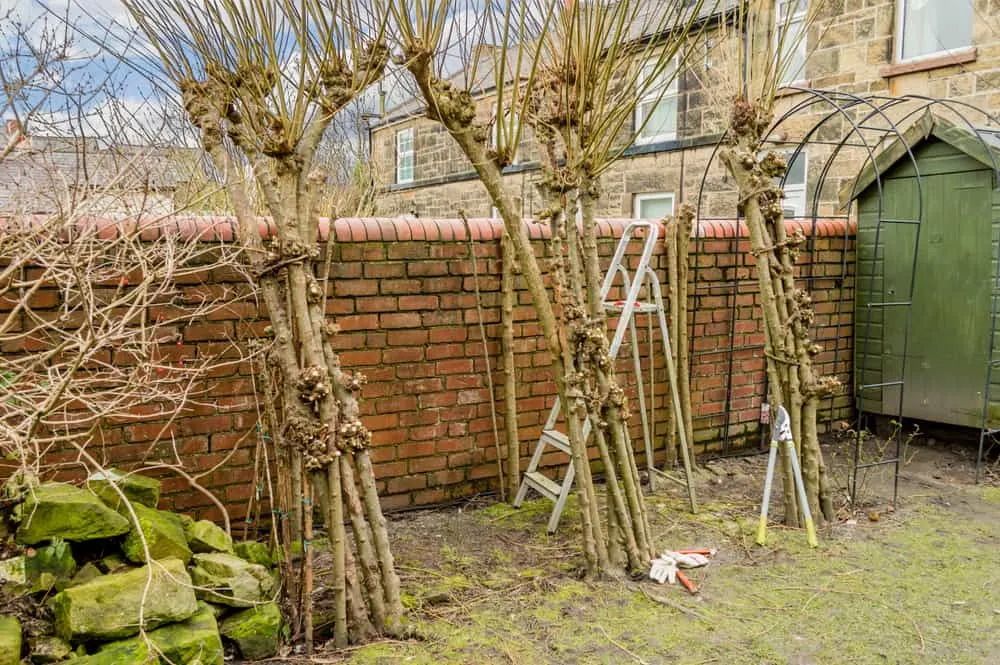
Why build the arbor when you could grow the arbor?
Willows (Salix spp.) are the ideal trees for forming living works of art. Readily rooting wherever you plant them, willows grow fast and have slender, flexible branches that can be trained, shaped, and pruned into all sorts of spectacular garden structures like domes, teepees, gazebos, and fences.
Living willow arches (and long and winding tunnels) are formed by planting branch cuttings on either side of the path. In two to three seasons, the willow branches will be tall enough to shape into an arch.
Tie two opposing willow tops together with zip ties or twine, leaving enough head room below to comfortably walk through. As the arbor fills in, tie back or trim any wayward growth to maintain the arching shape.
Once established, a living willow arbor is a marvelous thing. From spring to fall, it will come alive with charming green leaves and pretty catkins. After leaves drop, the woody structure remains to give the landscape some winter interest.
